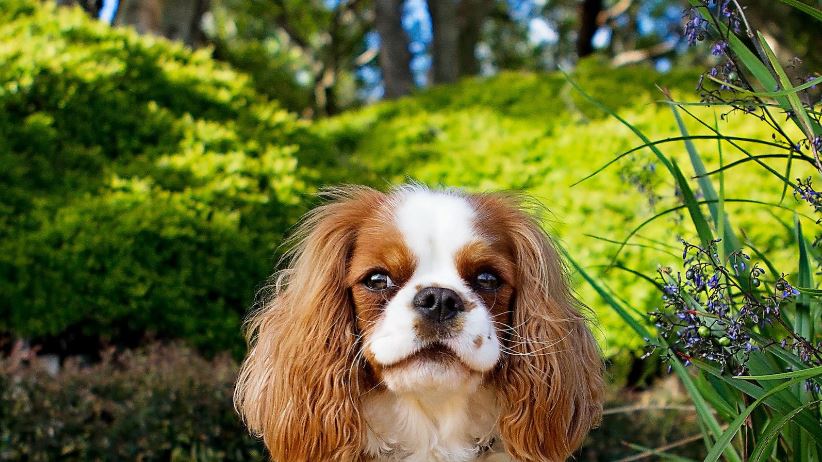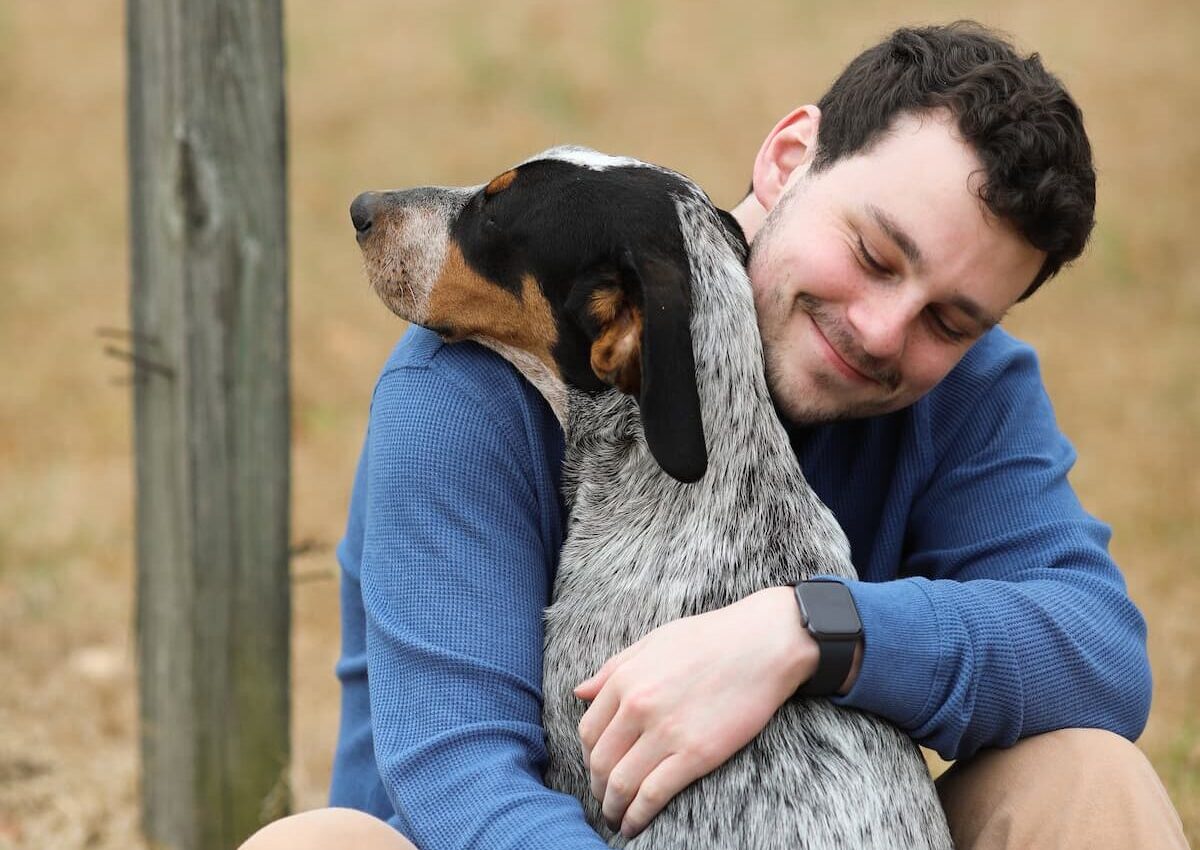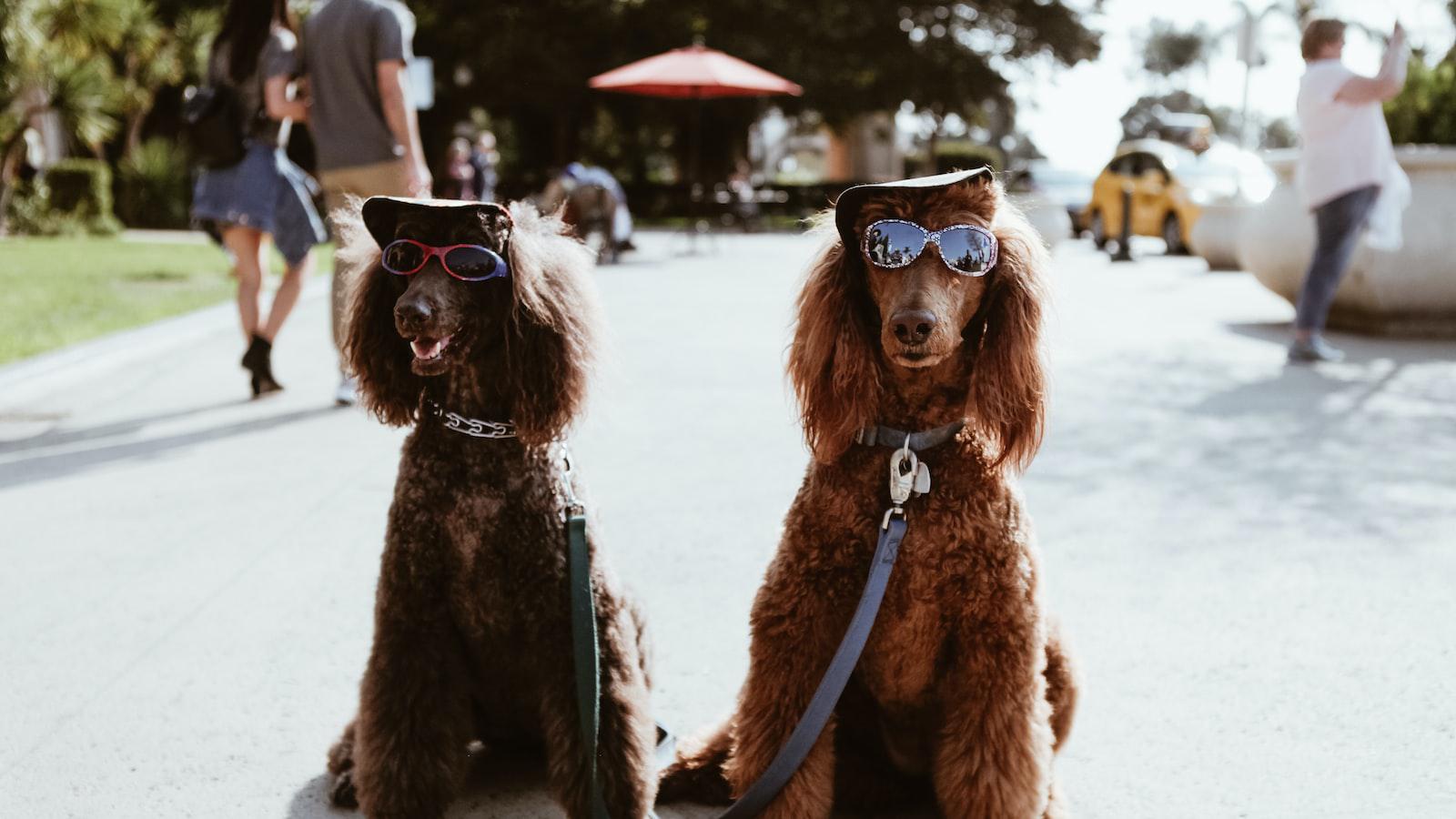Have you ever noticed that when you blow on your furry friend’s face, they react as if you just unleashed the wrath of a thousand tickles upon them?
It’s almost as if you’ve committed a heinous crime against dog-kind!
But why do dogs despise the gentle puffs of air that we humans find so amusing?
It’s a mystery that has puzzled pet owners for ages.
This article will answer the question: Why don’t dogs like it when you blow on them?
Why Don’t Dogs Like It When You Blow On Them?
Have you ever noticed how your furry friend reacts when you blow on them?
It’s no secret that many dogs don’t appreciate this act of affection from us humans.
But have you ever wondered why they react negatively?
Well, it turns out, it’s not just about their hair being ruffled or the unexpected gust of air on their face.
One reason why dogs may not like being blown on is because it can be a bit overwhelming for their sensitive noses.
Dogs have an incredibly powerful sense of smell, and blowing air directly into their face can disrupt their scent detection abilities.
It’s like bombarding them with a blast of unfamiliar scents, which can be confusing and even distressing.
The another reason is actually tied to their incredibly sensitive hearing.
Dogs possess an acute sense of hearing that far surpasses our own.
Their ears are designed to pick up a wide range of frequencies, allowing them to detect even the subtlest of sounds.
So, when we blow air near their ears, it produces a loud noise that may seem harmless to us, but to our furry friends, it can be akin to a sudden and thunderous roar!
Imagine being in a quiet room when, out of nowhere, someone bellows in your ear.
You would definitely recoil, right?
Well, that’s how dogs feel when we blow on them.
They perceive the noise as a potential threat or danger.
This is especially true for dogs who have had bad experiences associated with loud noises in the past, as it triggers their natural fight-or-flight response.
So, even though you may be trying to show them love, they may interpret it as an invasion of their personal space.
Another reason can be simply due to the sensation itself.
Imagine how it feels when someone unexpectedly blows air into your face – it can be a bit startling, right?
Well, the same goes for our furry companions.
The suddenness and force of the air hitting their face can startle them or make them feel uncomfortable, leading to their negative reaction.
It’s like someone unexpectedly blowing into your ear or directly onto your skin – not the most pleasant experience, is it?
Tips on Building a Positive Association with Blowing in Dogs
To help your furry friend become more comfortable with blowing, it’s crucial to introduce the practice gradually and in a positive manner.
Here are some tips to consider:
Create a Calm Environment: Find a quiet and familiar space where your dog feels safe.
Removing any potential distractions or loud noises can help them relax and focus on the task at hand.
Associate blowing with positive experiences: Pair blowing with something your dog loves, such as treats or their favorite toy.
By rewarding them immediately after blowing, you’ll create a positive association and help them understand that blowing is not something to be feared.
Start small and progress slowly: Begin by blowing gently from a distance and gradually increase the proximity and intensity over time.
Always pay attention to your dog’s body language and adjust accordingly.
If they show signs of discomfort or stress, take a step back and try again later.
Remember, building a positive association with blowing in dogs takes time and patience.
By understanding their perspective and implementing these tips, you can help your canine companion overcome their aversion and forge a more harmonious relationship.
Effective Ways to Interact with Your Dog
Instead of subjecting your pup to the unwelcome sensation of having air blown in into your face, let’s explore some alternative ways of interacting with your dog that they will surely appreciate!
1. Engaging in Interactive Play
Playing together is not only enjoyable for your dog, but it also strengthens the bond between you both.
Choose interactive toys that promote mental stimulation, such as puzzle games and treat-dispensing toys.
These toys can keep your dog entertained, engaged, and mentally active.
Additionally, consider engaging in activities that cater to their natural instincts, like fetch or hide-and-seek.
Not only will this keep your pup physically active, but it will also provide an outlet for their energy and make them happier overall.
2. Gently Petting and Massaging
Affectionate touch is an integral part of bonding with your furry companion.
Most dogs love being petted and stroked, but it’s essential to approach it in a way that they find enjoyable.
Each dog has their preferred areas of affection, so take cues from your pup to determine what they appreciate.
While some dogs may enjoy belly rubs or behind-the-ear scratches, others might prefer a gentle massage on their back or shoulders.
Pay attention to their body language and respond accordingly to make every petting session a positive experience for them.
3. Rewarding with Treats and Praise
Positive reinforcement is an effective way to train and communicate with your dog.
Whenever they exhibit desired behavior or successfully learn a new command, reward them with tasty treats and heaps of praise.
Dogs respond well to incentives, and associating good behavior with rewards will encourage them to repeat it.
It’s important to choose high-quality treats that are not only delicious but also appropriate for their dietary needs.
Remember to keep the treats small to prevent excessive caloric intake.
Offering verbal praise and enthusiastic cheers, together with the treat, will reinforce the positive experience and make your dog feel loved and appreciated.
FAQ
A: Why don’t dogs like it when you blow on them?
In simple terms, it all comes down to their natural instincts and sensory preferences.
As humans, we often forget that dogs experience the world in a completely different way than we do.
Q: What happens when you blow into your dog’s face?
A: When you blow on or into a dog’s face, you’re essentially creating an unexpected and intrusive sensation.
Think of it this way – you know when someone suddenly blasts cold air into your face?
It can be quite startling, right?
That’s how dogs feel when we blow on them.
They aren’t accustomed to this type of interaction, and it can make them feel uncomfortable or even scared.
Q: Are there any specific reasons behind their aversion to blowing?
A: Absolutely!
Dogs have incredibly sensitive noses, and they rely heavily on their sense of smell to interpret the world around them.
When we blow on our dogs, we’re not only creating a blast of air that might irritate their sensitive noses, but we’re also blocking their ability to pick up scents in the surrounding environment.
It’s like temporarily blinding them in a way, and they prefer to have their super sniffing powers fully operational.
Q: Can blowing on a dog cause any harm?
A: Blowing on a dog won’t cause any long-term harm or damage, but it’s important to be sensitive to your canine companion’s comfort level.
Dogs thrive on routine and familiarity, so introducing unexpected sensations like blowing on their faces can lead to anxiety or stress.
It’s always best to be mindful of their boundaries and find other ways to interact and bond with them.
Q: Are there any exceptions to this rule?
A: As with any generalization, there are always exceptions.
Some dogs might not mind being blown on and may even find it enjoyable.
Dogs with shorter snouts, like Bulldogs or Pugs, may be less sensitive to blowing thanks to their unique nasal anatomy.
Again, it’s all about getting to know your pooch and understanding their individual preferences and tolerances.
Q: How can I interact with my dog in a way that they’ll appreciate?
A: Instead of blowing on your dog, consider engaging in activities they truly enjoy.
Most dogs love a good belly rub, a gentle massage, or playing fetch with their favorite toy.
Spending quality time with your furry friend, understanding their body language, and respecting their personal space will go a long way in building a strong and trusting bond.
Q: Now that I understand why dogs don’t like being blown on, how can I make them feel more comfortable?
A: If you unintentionally blew on your dog in the past and they showed signs of discomfort, it’s crucial to rebuild trust.
Offering treats, gentle pats, and using positive reinforcement techniques can help them associate your presence with pleasant experiences.
Remember, patience and understanding are key when it comes to addressing any fears or anxieties your dog may have.
Farewell Note
It turns out, our furry friends have a strong instinctive response to having air getting blown in their faces.
As descendants of wolves, canines have developed a heightened sensitivity to certain stimuli, and the blowing of air happens to be one of them.
It’s like an alarm bell ringing in their heads, signaling them to back away and protect their personal space.
By blowing air, we unintentionally invade their comfort zone, overpowering their senses with a burst of unexpected stimuli.
Imagine someone suddenly blowing air on your face while you’re enjoying a peaceful moment —you’d probably recoil too!
Dogs share that same discomfort, and it’s important for us to respect their boundaries, just as we would with any other animal or human being.
So, the next time you’re tempted to blow raspberries on your dog or playfully exhale in their direction, remember their natural instincts are at play.
Instead, you can express love and affection in ways they’ll truly appreciate, like gentle caresses, belly rubs, or engaging in their favorite playtime activities.
By understanding and respecting their preferences, we can build stronger bonds and ensure our four-legged companions always feel safe and secure in our presence.
Ultimately, dogs may not like when you blow on them, but that’s just part of their unique nature. And honestly, we love them for it.














